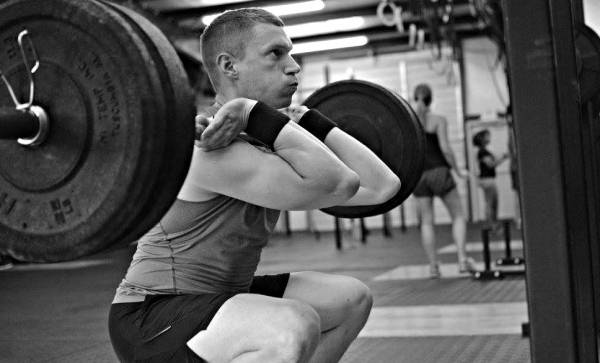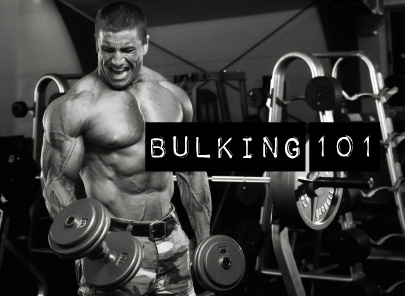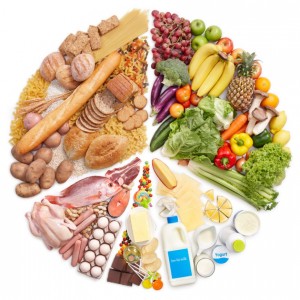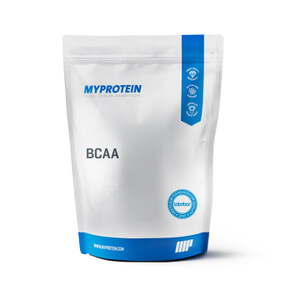By the healthiergang writer Riccardo Pitarresi, athlete and Taekwondo instructor, majoring in Dietetics.
Bulking and Insulin: Mass Increase
The parties are over and finally all bodybuilding enthusiasts can approach training with serenity, without the fluctuating closure of the tool room and the period when eating badly had become a cliché.
Now we are in the so-called bulking, the mass phase and we will see together the theory that lies at the basis of the whole winter period, which generally, excluding the agonists who compete, is characterized by theHYPER POWER SUPPLY. Let's start with some important concepts of endocrinology, which we will try to analyze without getting lost in too many technicalities but without sacrificing basic and important scientific knowledge for the cultural growth of the individual.

As discussed in the previous article on'insulin resistance, the role played by INSULIN, this anabolic and anti-catabolic hormone, is essential for the hypertrophic increase in muscle mass, just as it is equally important that the body responds adequately to the quantities of insulin that are produced, without developing forms of peripheral resistance to the action of insulin, which in this sense causes hyperglycemia.
It is interesting at this point to understand how insulin contributes to anabolic mechanisms, within which dietary context it is useful to know its pros and cons, how to manipulate it in our favor.
Brief Introduction to Insulin
 Insulin is an anabolic and anti-catabolic hormone synthesized by the pancreas with multiple properties . A recent study showed how insulin in addition to carrying out an anti-catabolic action, also has a permissive action towards skeletal muscle metabolism in the presence of high amounts of amino acids. As we said, among its many properties, there is the ability to decrease blood sugar levels in the bloodstream (hypoglycemic function).
Insulin is an anabolic and anti-catabolic hormone synthesized by the pancreas with multiple properties . A recent study showed how insulin in addition to carrying out an anti-catabolic action, also has a permissive action towards skeletal muscle metabolism in the presence of high amounts of amino acids. As we said, among its many properties, there is the ability to decrease blood sugar levels in the bloodstream (hypoglycemic function).
However, it is a fundamental mechanism because it is essential in physiological conditions to maintain the homeostatic condition of blood sugar in the body. Therefore, at a certain glycemic value, the pancreas responds by synthesizing insulin.
For example, let's consider a digestive process following any meal throughout the day, where we have consumed carbohydrates, our body will begin to absorb them and these will lead to an increase in blood glucose levels; is here for so long that the hypoglycemic function of insulin takes over, capable of interacting with a specific receptor named IR (INSULIN-RECEPTOR) placed on the membrane of myocytes and adipocytes; once contact is made, a cascade of biochemical events will result in the opening of named channels GLUT-4 in charge of transport of glucose within the same myocytes and adipocytes, which possess precisely these specific receptors.
Bulking: What is it? How does it work?
Now understood in a nutshell what is the biochemical mechanism capable of allowing glucose to be stored in muscles and adipose tissue, we can introduce today's theme: the "mass phase".
In jargon we mean that period (in English better known as BULKING), accompanied by workouts that stimulate the muscles in a hypertrophic sense, where through high-calorie nutrition and, if deemed necessary, also through food supplementation, weight gain is deliberately sought, directing the skeletal muscle system towards the acquisition of greater volume, to achieve an aesthetic sense that is satisfactory and satisfying for many, while positively gaining power gained through weight lifting.
This means that consuming a certain amount of kilocalories, and in particular if the kilocalories consumed are greater than the real energy needs of the organism, the latter will have a caloric surplus; to be clearer, part of the macronutrients introduced in a high-calorie diet will be “in excess” compared to the real energy requirement to keep the weight stable.
Then a if a part of the daily total macronutrients will be used for the maintenance of all biological and biochemical functions, another fraction of them (the one in excess) will be used for plastic purposes.
Insulin and Weight Gain
Insulin, in association with a high-calorie diet, will be secreted copiously, especially if the food pattern includes:
- abundant carbohydrate meals (GLYCEMIC LOAD)
- if the carbohydrate sources ingested are high glycemic index (GI)
- if you eat high-protein meals
- at the end of a training session, when the glycogen stores have been partially or totally depleted; the fat and muscle cells depleted with physical activity ask themselves to be recharged, increasing cellular affinity for insulin (which, as we know, would bring back carbohydrates from the bloodstream to the cells to refuel with the necessary energy).
 By modifying the cellular permeability, all the macronutrients can be conveyed more efficiently to the muscles (but also to the adipocytes), see the carbohydrates and go the amino acids.
By modifying the cellular permeability, all the macronutrients can be conveyed more efficiently to the muscles (but also to the adipocytes), see the carbohydrates and go the amino acids.
When we are following a high-calorie dietary protocol, with which biochemical events does our body increase lean mass? Does lean mass increase or decrease?
Our goal is to progressively increase weight in an intelligent way. At this point, let's try to understand how our body interacts with food and how it relates to muscle anabolism.
In this sense, the growth of our muscles will depend on the following elements:
- the QUANTITY of food consumed
- the QUALITY of food consumed
- from the breakdown of macronutrients
- from our state of health
- from our hormonal setting
- from the hypertrophic stimuli of training
An excessive intake of macronutrients, see carbohydrates, an excessive intake of fat, can lead to substantial weight gain but this does not necessarily translate into an increase in lean mass, as there will always be an involvement of the adipose tissue, a macroscopic energy reserve compartment that will expand in spite of ourselves during periods of overeating.
So why eat more if we need to get fat? It is an inevitable consequence, but if we want to increase our muscle volume, it is a necessary evil (however no one forbids us to alternate cardio activity with the equipment room, for example with interval training programs, to dispose of the bacon and love handles, provided that overeating due to genetic reasons does NOT lead us to a significant increase in body fat).
However, we specify that the depletion of muscle glycogen stores after a workout is an incontrovertible fact, and it is for this reason that in all sports where hypertrophy is sought, carbohydrates are the first macronutrient to be increased in the bulking phase, to carry out the necessary recharges, to always give 100% and adequately nourish the muscles. The second food that undergoes an increase during the "bulking" phase is the protein requirement. Contrary to the legends that hover in the equipment rooms of all the gyms in your country, muscle anabolism reaches a plateau at a quantity of 2.0-2.5 g / per kg body weight, such that, once this threshold is exceeded, the muscles will not see further progress and / or improvements.
This means that perpetrating a diet of 3 g of protein / per kg of body weight will not give any kind of advantage over those who consume 2 g / per kg of body weight. It therefore appears obvious how the volume of work to which the kidneys are subjected will be higher to the extent that excess protein is consumed, and therefore consuming 3 g per kg body weight would "unnecessarily" tire the body, it being understood that in a recent study, Jose Antonio observed how conducting a high-protein diet with figures around 3 g per kg body weight did not cause any kind of damage.
The fats must also be careful: you must not exceed in quantity, especially if you keep in mind that other energy substrates will be preferred during anaerobic training such as in power and strength sports, and you will have to pay particular attention to the quality of the same, making sure that the greatest possible quantity of ingested lipids are mono-polyunsaturated rather than saturated.
Insulin Handling: Stuff for the Few?
Manipulating insulin is actually the simplest thing in this world if you understand the biochemical mechanisms behind it, previously explained, and it is for this reason that we would like to clarify the following: in hyperalimentation, even if you do not have a full perception of it, prefer medium-high glycemic index foods and / or eat high-protein meals, train with great commitment, are all sufficient elements that will stimulate the pancreas to hypersecretions of insulin (but this mechanism is effective only in NON insulin-resistant subjects!) which will block the action of catabolic hormones (as anti-catabolic hormone)
On the one hand they will direct a part of the excess macronutrients towards the biochemical stages of conversion of the same into triglycerides, with consequent expansion of the adipose compartment, and on the other hand they will ensure sufficient nourishment of the myocytes with glucose and amino acids (assisted by the hypertrophic stimuli which lead the muscle satellite cells to repair the damaged tissue) to build what will then become the ultimate product of our training over time, that much sought after aesthetic element that can take shape slowly, realizing our goals.
 The insulin peak recorded at the end of a workout can also be advantageously exploited to better convey certain supplements, see i BCAA or Impact whey protein, to be better absorbed.
The insulin peak recorded at the end of a workout can also be advantageously exploited to better convey certain supplements, see i BCAA or Impact whey protein, to be better absorbed.
The biggest drawback, as mentioned above, is represented by the increase in the adipose compartment. Therefore, if you don't want to give up your line, a cardio component will be indispensable, and it must be integrated into your training plan .. otherwise wait for the spring definition cycle where the dietary approach will be different: NO PAIN NO GAIN!


























